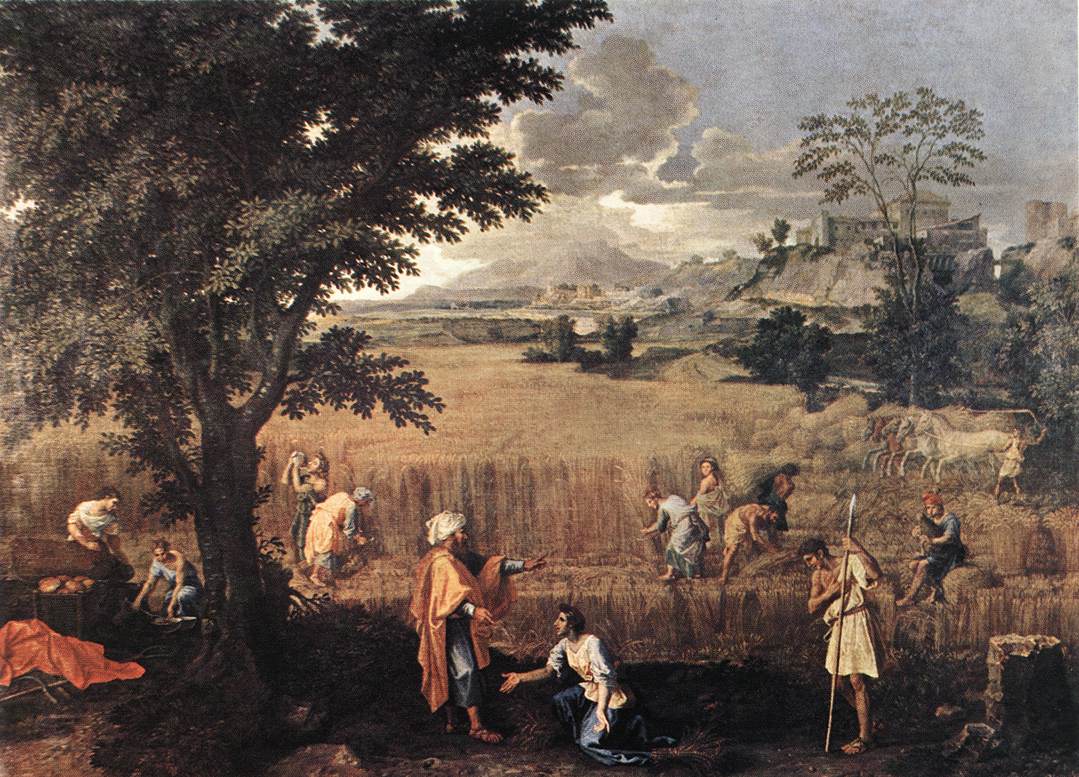Today is the first Sunday of August; and this week’s painting is the first of four sunstruck pictures chosen to mark the month. Entitled Summer, or Ruth and Boaz, the work was painted by the French artist Nicholas Poussin between 1660 and 1664, close to the end of his life. One of four paintings on the theme of the four different seasons, all created for the Duc de Richelieu, nephew of the famous French statesman, it is now in the Louvre, in
Not much is known about the history of the commission, which receives no mention either in the artist’s letters or in the biographies of him written by his contemporaries. The French art historian and critic Andre Felibien was the first writer to describe Poussin’s four seasons, although he did so briefly and damned them with faint praise: “It is true that if one still sees in these four paintings the force and beauty of the painter’s genius, one also observes in them the feebleness of his hand.” Many subsequent writers have concurred, but when the pictures were cleaned and restored some ten years ago, for the occasion of the great Poussin exhibition at the
Poussin, who was...


